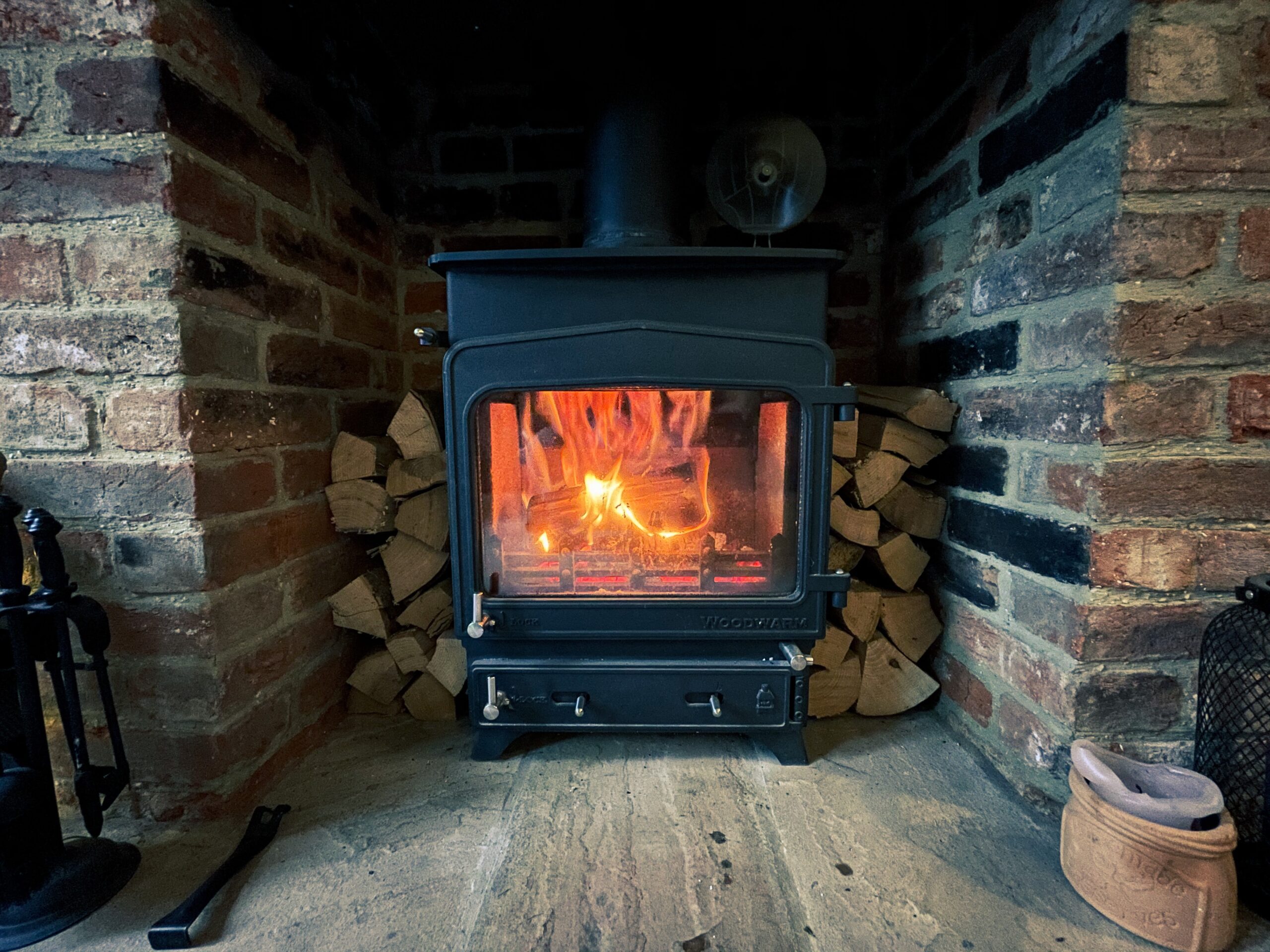Wood burning stoves are often suggested as an alternative form of central heating…but new research suggests there’s more dangers to using them than we ever realised…
In 2022, Chief Medical Officer Chris Whitty released a report about air pollution in the UK. His findings, particularly about wood-burning stoves are truly alarming.
Wood burning stoves have a lot of good press. In addition to providing you with heating and potentially hot water, they feel cosy, they look attractive, and they have a self-sufficient feel. The idea of heading out to your local forest and gathering up wood to burn is an appealing one.
The numbers back up their popularity. There are 1.5 million wood burners in UK homes, and 200,000 are installed every 12 months.
But this new report brings those ideas to a screeching halt. Let’s unpack it a bit…
The Good…
Firstly, it must be noted that modern wood burning stoves have had to meet certain emissions targets. Since 2022, new wood burning stoves burn a bit cleaner than older models. You can tell them apart because they’ll have the ‘Ecodesign’ label. The fuel these stoves can use is also more tightly regulated.
Unfortunately, the good news stops there. According to Whitty’s report, ‘solid fuels are by far the most polluting method of domestic heating.’
The Bad…
A lot of people assume that burning wood is actually carbon neutral. Trees absorb carbon dioxide as they grow and release it when burned. However, trees simply can’t grow fast enough to reabsorb all the C0₂ that burning solid fuel creates.
Many people believe that burning wet wood is the cause of this, but the data suggests that even burning properly seasoned dry wood can release loads of pollutants into the air. In fact, even an Ecodesign model using the correct wood can emit 750 times more pollution than an HGV.
Compare this to gas boilers, which already have a bad reputation as a source of pollution. An Ecodesign wood burning stove will produce 450 times more emissions.
This data was produced in ideal lab conditions- simply put that means that the environmental impact of most stoves will be far worse.
The Deadly…
It’s not just their environmental impact that makes wood burners a heat source to avoid. It’s also the harm they can do to your health.
Fine particulate matter (also known as PM2.5) is the fancy name for tiny soot particles. If you can smell smoke, you’re breathing it in. Wood burning stoves produce loads of it.
PM2.5 is associated with lots of conditions, including an increased risk of lung cancer, reduced lung function and pulmonary fibrosis. It can also make asthma symptoms worse. It’s especially deadly for children and elderly people.
Stoves have even been suggested to account for about 50 percent of people’s exposure to cancer-causing chemicals.
This smoke gets released into your wider neighbourhood, so it’s not just you and your family that can be affected, it’s also lowering the air quality of your entire neighbourhood.
What Does This Mean For you?
Even if you’ve read all this data and decided that wood burning stoves are too good to give up, there may not be much choice in the matter. There are already campaigns to phase out the sale of new wood stoves by 2027, and to phase them out entirely in the 2030s.
Given that gas boilers are also on the way out, moving away from onsite burning is a good way to futureproof your home. This is where electric heating can come into play. All electric heating can be made carbon neutral, lowering your carbon emissions and improving the air quality of your home and neighbourhood.
If you want a centralised source of heat, then an electric boiler is a great idea. If you enjoy the cosy feel of the fire, then IR panels can provide that same ‘warm from the inside’ feel- minus any harmful pollutants.
Got any questions? You can give us a call on 0116 436 2250 to get started. Alternatively, drop us an email at sales@mirrorstone.co.uk.
You can also request a FREE catalogue to be sent direct to your door. Simply hit the button below and fill the form out, we’ll handle the rest.

